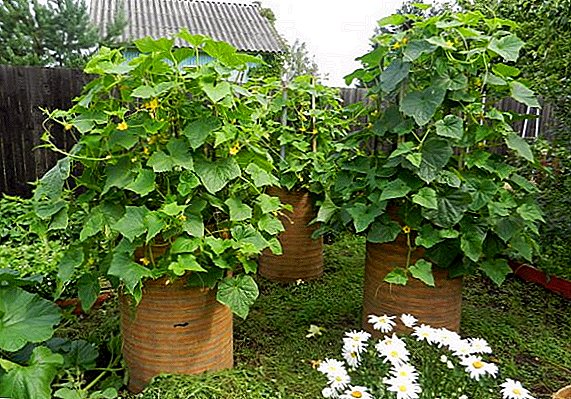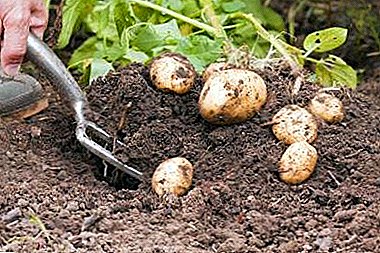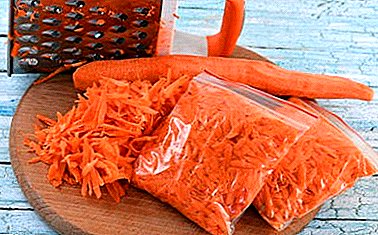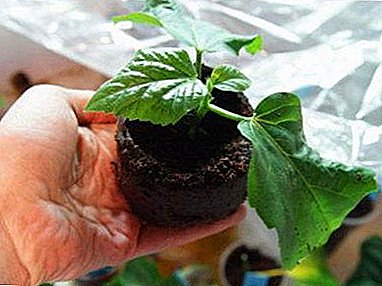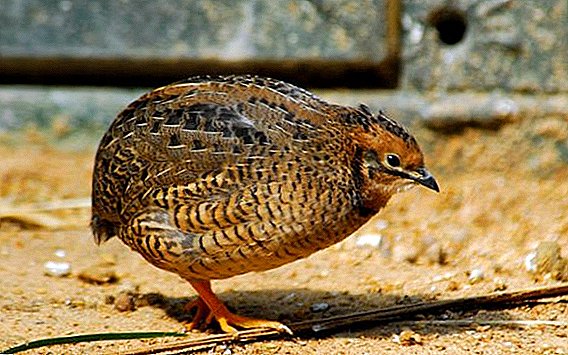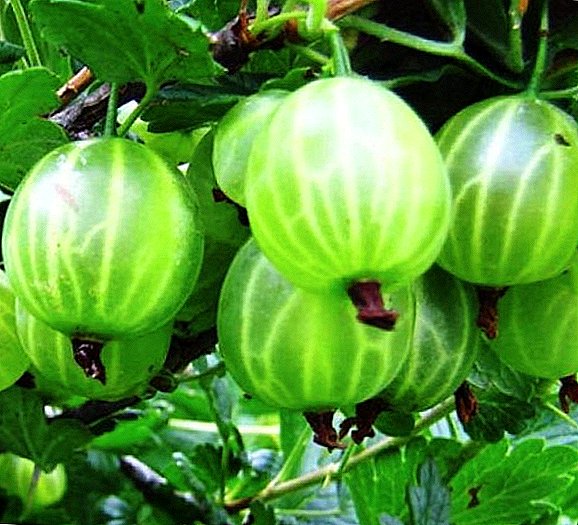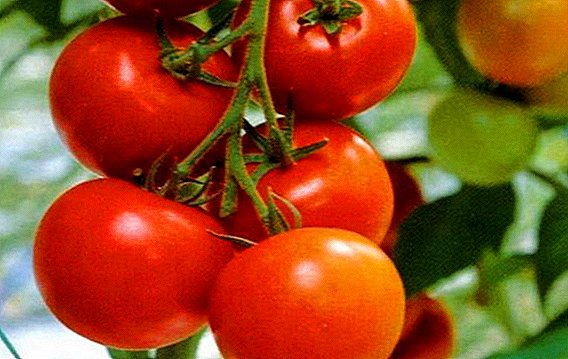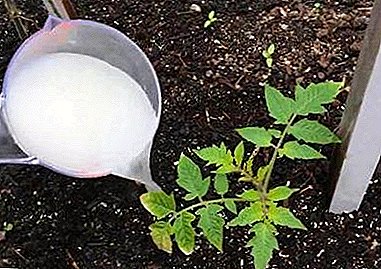
Yeast is one of the very popular fertilizers among gardeners, which can improve the structure of the soil and saturate it with protein and microelements. With it, you can accelerate the growth of plants and increase the yield of a large number of fruit and berry crops.
In our article we will talk about the pros and cons of this method of feeding tomatoes. You will learn at what time and how to properly conduct the procedure.
A recipe for cooking such a fertilizer at home will also be provided. You can also watch a useful video on this topic.
Advantages and disadvantages
Yeast dressings for tomatoes are very effective, as they saturate the plants with the phosphorus they need.. When they are used, the fungi contained in the yeast begin to actively process the organic matter contained in the soil, improving the absorption of trace elements and minerals by the plants.
Yeast contains, in addition to phosphorus, potassium, magnesium, folic acid, proteins and carbohydrates. All these substances are extremely useful in the growth and fruiting of tomatoes. At the same time, the stems of plants do not stretch upwards, but become dense, strong and healthy.
Fertilizers of this kind are, in addition, very inexpensive and readily available - in any supermarket you can buy a packet of dry or a briquette of classic yeast and prepare a top dressing for plants. It will be inexpensive, organically pure and no less effective than ready store.
The main disadvantage of yeast top dressing for tomatoes is that it dramatically impoverishes the soil over the season - microorganisms actively process the humus contained in the earth, the plants give a sharp growth when introduced. But if the beds are fed only with this type of fertilizer, without adding straw, grass, leaves to the soil - next year the harvest will be poor.
Important: Yeast is able to wash out potassium and calcium, which is so necessary for tomatoes, from the fertile layer; therefore, when making infusions, it is necessary to further enrich the soil by fertilizing with ashes or ready-made mineral mixtures.
When and how to feed seedlings and adult tomatoes?
Fertilizing tomatoes with yeast solutions prepared at home can be carried out at all stages of plant growth. - from watering seedlings, after picking and before feeding during active ripening of fruits. It is especially effective to apply top dressing in a warm, well-heated soil in a greenhouse a few days before planting young plants in it. The earth will have time to be filled with phosphorus, fungi will begin to actively process and improve the structure of the soil in which it is planned to plant seedlings.
Recipe how to cook fertilizer at home
Fertilizer can be prepared from both dry and classic yeast. In the absence of their top dressing is prepared from rye crusts, pre-soaked with water, or from pre-germinated wheat.
Pressed yeast is a fairly simple preparation for tomatoes.:
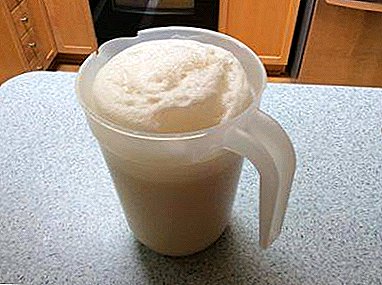 50 grams of the substance is diluted in a liter of warm water.
50 grams of the substance is diluted in a liter of warm water.- Add 2-3 teaspoons of sugar.
- Cover with a cloth and infuse for several hours, then mix.
- The finished infusion is poured into a standard 10-liter bucket with warm water, mixed well, add a half-liter jar of sifted ash and once again insist.
- Before use, the resulting solution is diluted with pure water in the ratio of liter of product to 5 liters of water.
It is even easier to prepare top dressing from dry yeast, since they are easier to dissolve in water and start the reaction more quickly.
- A 10-liter bucket of warm water will require a packet of dry matter, 3-5 tablespoons of granulated sugar and a glass of sifted ash.
- The resulting solution is infused for several hours, after which it is filtered and diluted in a ratio of a liter of infusion per 10 liters of water.
- The resulting fertilizer can be watered as seedlings, and adult transplanted bushes - gently distributing it with a watering can around the plant.
To enhance the effect in the resulting infusion, you can add organic fertilizer. - Mullein, humus, hood of chicken manure. No need to get involved in this type of fertilizer - just one watering of the seedlings at the stage of formation of young bushes, one when transplanting plants in the greenhouse and open ground, and another - when tying the buds.
Board: Yeast fertilizer must be prepared and applied immediately, it is not subject to storage. The soil must be well warmed, warm, otherwise the application of top dressing will become useless.
Foliar Tomato Fertilizer
Yeast fertilizers mainly feed the plants in a standard way - by entering into the soil. The effectiveness of foliar nutrition is not very high, but a couple of times during the season you can spray the bushes of already well-received tomatoes with ready fertilizer - this will saturate them with the necessary microelements and protect them from potential pests. When a slightly larger amount of sifted ash is added to the solution, the effectiveness of foliar feeding will increase. More options foliar feeding can be found here.
In the greenhouse
 The use of yeast dressings for tomatoes in the greenhouse is very effective. The soil there is usually well heated, and fungi act more efficiently. For maximum enhancement of yeast fertilizers, it is recommended that spring be applied to the greenhouse with compost, mulched straw or grass.
The use of yeast dressings for tomatoes in the greenhouse is very effective. The soil there is usually well heated, and fungi act more efficiently. For maximum enhancement of yeast fertilizers, it is recommended that spring be applied to the greenhouse with compost, mulched straw or grass.
The more organic matter in the greenhouse soil that yeast fungi will process, the more healthy and stronger the tomatoes will be. Since the ground in the greenhouse is warmer than in the open field, you can prepare the infusion without its prior long aging - insist an hour and a half and use.
When watering a tomato yeast solutions do not make them directly under the stem - using a watering can, water the largest possible area around the bushes so that the soil should be soaked with the composition. So the efficiency will be much higher.
What to do if overdone with the dosage?
Organic fertilizers rarely can harm plants, even if they have made too much of them. The only thing that can be - with abundant watering with infusion of yeast in the soil, there may be a lack of potassium and calcium, especially in the second year after fertilization. To compensate for the deficiency of these microelements, add an infusion or a simple ash solution to the soil — it will neutralize the fungus’s actions and saturate the soil with the necessary minerals.
Conclusion
The fertilizing described above cannot be the only fertilizer for tomatoes - it works especially well in combination with ashes and complex mineral fertilizers. It works as well as possible if compost, mulched straw or grass, humus, and last year's foliage are introduced into the soil of the greenhouse or open ground. Under these conditions, the tomato crop will be abundant and the plants themselves will be pleased with health and strength.


 50 grams of the substance is diluted in a liter of warm water.
50 grams of the substance is diluted in a liter of warm water.